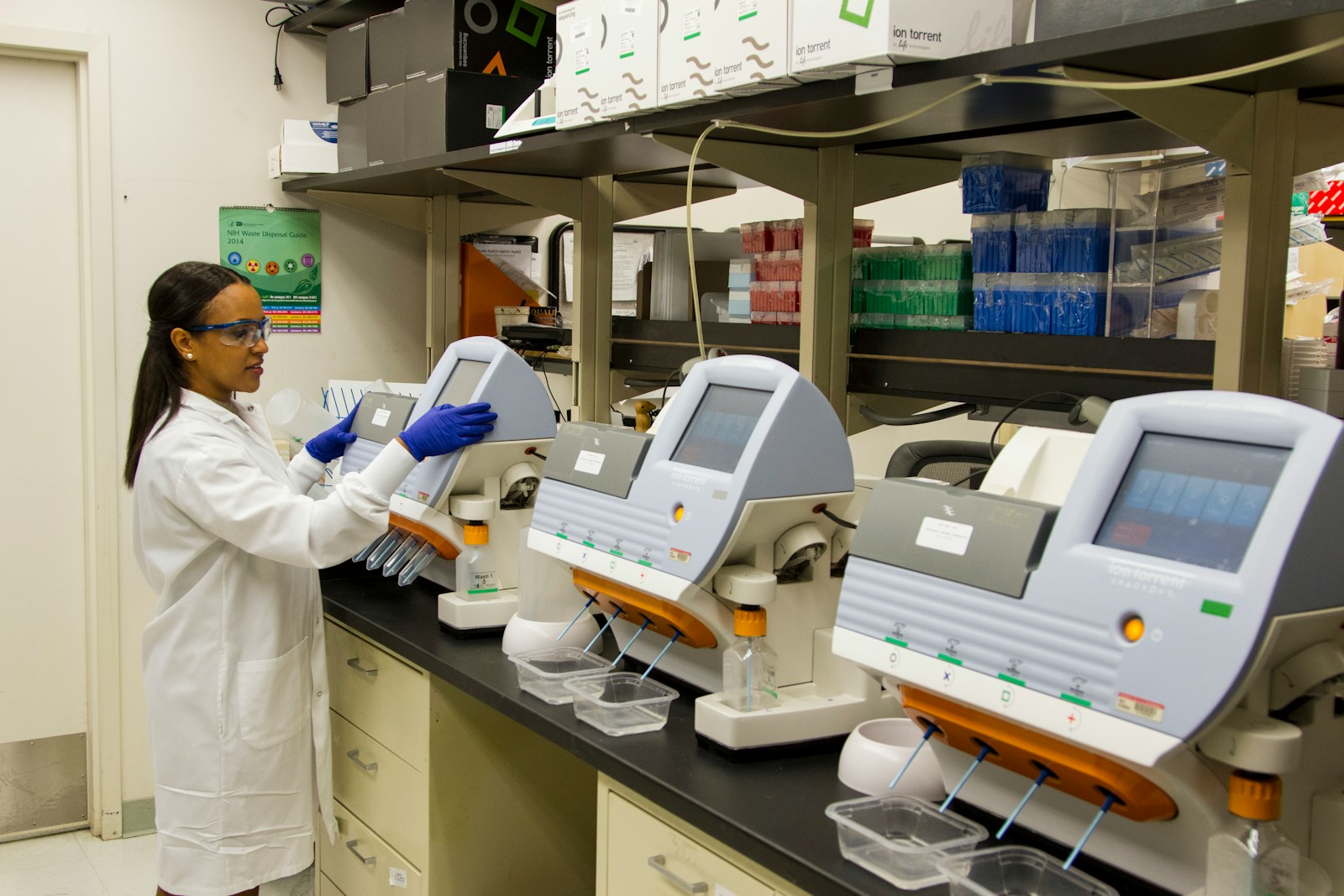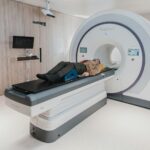Common Blood tests, sometimes called blood panels, are one of a physician’s most basic tools. Not that long ago, doctors diagnosed patients through observation and the patients’ answers to questions. Today, we have a wide range of testing options to choose from, with blood tests being among the most basic.
Common Blood tests allow a doctor to see a detailed analysis of the nutrients and waste products in your body as well as how various organs (e.g., kidneys and liver) are functioning.
During a physical examination, your doctor will often draw blood for chemistry and complete blood count (CBC) tests as well as a lipid profile, which measures cholesterol and related elements. Here is a brief explanation of the abbreviations used in measurements followed by descriptions of several common test components.
Common Blood Tests Measurements
Blood tests use the metric measurement system and abbreviations such as the following:
cmm cells per cubic millimeter
fL (femtoliter) fraction of one-millionth of a liter
g/dL grams per deciliter
IU/L international units per liter
mEq/L milliequivalent per liter
mg/dL milligrams per deciliter
mL milliliter
mmol/L millimoles per liter
ng/mL nanograms per milliliter
pg (picograms) one-trillionth of a gram
Chemistry Panel (or Metabolic Panel)
ALT (alanine aminotransferase)
Healthy range: 8 to 37 IU/L
This test looks at levels of the liver enzyme ALT. When all’s well with your liver, your score on this test should be within range. Anything higher may indicate liver damage.
Albumin
Healthy range: 3.9 to 5.0 g/dL
A protein made by the liver, albumin levels can be an indicator of liver or kidney problems.
A/G ratio (albumin/globulin ratio) or total protein test
Healthy ratio: a bit over 1, favoring albumin
There are two types of protein your blood — albumin (see above) and globulin. The A/G ratio test compares levels of these proteins with one another. Elevated protein levels could indicate a health condition in need of attention.
Alkaline phosphatase
Healthy range: 44 to 147 IU/L
This enzyme is involved in both liver and bone, so elevations may indicate problems with the liver or bone-related disease.
AST (aspartate aminotransferase)
Healthy range: 10 to 34 IU/L
This enzyme is found in heart and liver tissue, so elevations suggest problems may be occurring in one or both of those areas.
Bilirubin
Healthy range: 0.1 to 1.9 mg/dL
This provides information about liver and kidney functions, problems in bile ducts, and anemia.
BUN (blood urea nitrogen)
Healthy range: 10 to 20 mg/dL
This is another measure of kidney and liver functions. High values may indicate a problem with kidney function. A number of medications and a diet high in protein can also raise BUN levels.
BUN/creatinine ratio
Healthy ratio of BUN to creatinine: 10:1 to 20:1 (men and older individuals may be a bit higher)
This test shows if kidneys are eliminating waste properly. High levels of creatinine, a by-product of muscle contractions, are excreted through the kidneys and suggest reduced kidney function.
Calcium
Healthy range: 9.0 to 10.5 mg/dL (the elderly typically score a bit lower)
Too much calcium in the bloodstream could indicate kidney problems; overly active thyroid or parathyroid glands; certain types of cancer, including lymphoma; problems with the pancreas; or a deficiency of vitamin D.
Chloride
Healthy range: 98 to 106 mEq/L
This mineral is often measured as part of an electrolyte panel. A high-salt diet and/or certain medications are often responsible for elevations in chloride. Excess chloride may indicate an overly acidic environment in the body. It also could be a red flag for dehydration, multiple myeloma, kidney disorders, or adrenal gland dysfunction.
Creatinine
Healthy range: 0.5 to 1.1 mg/dL for women; 0.6 to 1.2 mg/dL for men (the elderly may be slightly lower)
The kidneys process this waste product, so elevations could indicate a problem with kidney function.
Fasting glucose (blood sugar)
Healthy range: 70 to 99 mg/dL for the average adult (the elderly tend to score higher even when they are healthy
Blood sugar levels can be affected by food or beverages you have ingested recently, your current stress levels, medications you may be taking, and the time of day. The fasting blood sugar test is done after at least 6 hours without food or drink other than water.
Phosphorus
Healthy range: 2.4 to 4.1 mg/dL
Phosphorus plays an important role in bone health and is related to calcium levels. Too much phosphorus could indicate a problem with kidneys or the parathyroid gland. Alcohol abuse, long-term antacid use, excessive intake of diuretics or vitamin D, and malnutrition can also elevate phosphorus levels.
Potassium
Healthy range: 3.7 to 5.2 mEq/L
This mineral is essential for relaying nerve impulses, maintaining proper muscle functions, and regulating heartbeats. Diuretics, drugs that are often taken for high blood pressure, can cause low levels of potassium.
Sodium
Healthy range: 135 to 145 mEq/L
Another member of the electrolyte family, the mineral sodium helps your body balance water levels and helps with nerve impulses and muscle contractions. Irregularities in sodium levels may indicate dehydration; disorders of the adrenal glands; excessive intake of salt, corticosteroids, or pain-relieving medications; or problems with the liver or kidneys.
Common Blood Tests: Lipid Panel (or Lipid Profile)
The lipid panel is a collection of tests measuring different types of cholesterol and triglycerides (fats) in your bloodstream.
Total cholesterol
General rules (best to worst):
- Healthy Below 200 mg/dL (below 5.18 mmol/L)
- Borderline high 200 to 239 mg/dL (5.2 to 6.2 mmol/L)
- High Above 240 mg/dL (above 6.2 mmol/L)
This test measures combined levels of both LDL (bad) and HDL (good) cholesterol. The test may be done simply to record an individual’s cholesterol levels or for comparison purposes (e.g., to determine if cholesterol-lowering medications or nutrients are working).
Triglycerides
Healthy range: 40 to 160 mg/dL
These fats are found in the bloodstream and may contribute to heart disease and other health problems.
HDL cholesterol
General rules:
- Best Above 60 mg/dL
- Good 50 to 60 mg/dL
- Poor Below 40 mg/dL for men; below 50 mg/dL for women
Also known as good cholesterol, HDL (high-density lipoprotein) protects against heart disease. Low scores are risk factors for heart disease.
LDL cholesterol
General rules (best to worst):
- Optimal Below 100 mg/dL
- Near optimal 100 to 129 mg/dL
- Borderline high 130 to 159 mg/dL
- High 160 to 189 mg/dL
- Very high Above 189 mg/dL
Also known as bad cholesterol, LDL (low-density lipoprotein) is the substance that clogs arteries and is linked to heart disease.
Total cholesterol/HDL ratio
American Heart Association guidelines:
- Optimal Ratio of 3.5 to 1
- Healthy Ratio of 5 to 1 or lower
This ratio is another way of checking your risk of heart disease. It is determined by dividing your HDL cholesterol level into total cholesterol. But don’t worry about the math – the lab normally does the calculation, so your doctor will simply tell you what the ratio is.
Complete Blood Count (CBC)
The CBC test is primary in Common Blood Tests. It examines cellular elements in the blood, including red blood cells, various white blood cells, and platelets. Here is a list of the components that are normally measured, along with typical values. If your doctor says you’re fine but your tests results are somewhat different from the range shown here, don’t be alarmed. Some labs interpret test results a bit differently from others, so don’t consider these figures absolutes.
WBC (white blood cell) leukocyte count
Normal range: 4,300 to 10,800 cmm
White blood cells help fight infections, so a high white blood cell count could be helpful for identifying infections. It may also indicate leukemia, which can cause an increase in the number of white blood cells. On the other hand, too few white blood cells could be caused by certain medications or health disorders.
WBC (white blood cell) differential count
Normal range:
- Neutrophils 40% to 60% of the total
- Lymphocytes 20% to 40%
- Monocytes 2% to 8%
- Eosinophils 1% to 4%
- Basophils 0.5% to 1%
This test measures the numbers, shapes, and sizes of various types of white blood cells listed above. The WBC differential count also shows if the numbers of different cells are in proper proportion to each other. Irregularities in this test could signal an infection, inflammation, autoimmune disorders, anemia, or other health concerns.
RBC (red blood cell) erythrocyte count
Normal range: 4.2 to 5.9 million cmm
We have millions of red blood cells in our bodies, and this test measures the number of RBCs in a specific amount of blood. It helps us determine the total number of RBCs and gives us an idea of their lifespan, but it does not indicate where problems originate. So if there are irregularities, other tests will be required.
Hematocrit (Hct)
Normal range: 45% to 52% for men; 37% to 48% for women
Useful for diagnosing anemia, this test determines how much of the total blood volume in the body consists of red blood cells.
Hemoglobin (Hgb)
Normal range: 13 to 18 g/dL for men; 12 to 16 g/dL for women
Red blood cells contain hemoglobin, which makes blood bright red. More importantly, hemoglobin delivers oxygen from the lungs to the entire body; then it returns to the lungs with carbon dioxide, which we exhale. Healthy hemoglobin levels vary by gender. Low levels of hemoglobin may indicate anemia.
Mean corpuscular volume (MCV)
Normal range: 80 to 100 femtoliters
This test measures the average volume of red blood cells, or the average amount of space each red blood cell fills. Irregularities could indicate anemia and/or chronic fatigue syndrome.
Mean corpuscular hemoglobin (MCH)
Normal range: 27 to 32 picograms
This test measures the average amount of hemoglobin in the typical red blood cell. Results that are too high could signal anemia, while those too low may indicate a nutritional deficiency.
Mean corpuscular hemoglobin concentration (MCHC)
Normal range: 28% to 36%
The MCHC test reports the average concentration of hemoglobin in a specific amount of red blood cells. Here again, we are looking for indications of anemia if the count is low, or possible nutritional deficiencies if it’s high.
Red cell distribution width (RDW or RCDW)
Normal range: 11% to 15%
With this test, we get an idea of the shape and size of red blood cells. In this case, “width” refers to a measurement of distribution, not the size of the cells. Liver disease, anemia, nutritional deficiencies, and a number of health conditions could cause high or low RDW results.
Platelet count
Normal range: 150,000 to 400,000 mL
Platelets are small portions of cells involved in blood clotting. Too many or too few platelets can affect clotting in different ways. The number of platelets may also indicate a health condition.
Mean Platelet Volume (MPV)
Normal range: 7.5 to 11.5 femtoliters
This test measures and calculates the average size of platelets. Higher MPVs mean the platelets are larger, which could put an individual at risk for a heart attack or stroke. Lower MPVs indicate smaller platelets, meaning the person is at risk for a bleeding disorder.
Thyroid (Common Blood Tests)
While not part of the standard blood panel, I often order thyroid tests for my patients, especially if they report fatigue and weight gain, or weight loss and feelings of nervousness or hyperactivity. Some physicians dismiss borderline low or high tests, but I’ve found that these can be very helpful for identifying problems with the thyroid gland. Here are the ranges I look for in thyroid tests:
| Test | Normal Range |
|---|---|
| Thyroid-stimulating hormone (TSH) | 0.3 to 3 |
| Total T4 (total thyroxine) | 4.5 to 12.5 |
| Free T4 (free thyroxine) | 0.7 to 2.0 |
| Total T3 (total triiodothyronine) | 80 to 220 |
| Free T3 (free triiodothyronine) | 2.3 to 4.2 |
If your test shows you are below the minimum numbers, you may be suffering from hypothyroidism, or low thyroid. If your scores are above the normal range, you may have an overly active thyroid, or hyperthyroidism. In either case, your physician can advise you on appropriate medication.
Vitamin D
Normal range: 30 to 74 ng/mL
Vitamin D deficiencies are very common and that’s why it’s essential in Common Blood Tests. Too little vitamin D can put you at risk for broken bones, heart disease, cancer, and a host of other ailments. Our bodies can make vitamin D, but only when bare skin, free of sunblock and lotions, is exposed to sunlight. And even then, people of color and older individuals may not be able to manufacture sufficient quantities for optimal health. The best way to determine if you need supplements is to have a vitamin D test, known as 25-hydroxyvitamin D. Here again, doctors don’t always agree on how to interpret the results. My own preference is to see readings in the normal range.
There are quite a few more tests available in Common Blood Tests, but the ones included here are among the most common.
To get accurate readings, be sure to follow your doctor’s instructions in preparing for tests. You may, for example, be asked not to eat and to drink only water for anywhere from a few hours to 12 hours beforehand. Please follow these instructions, or your results may be skewed, requiring additional tests or even unnecessary medications.
















